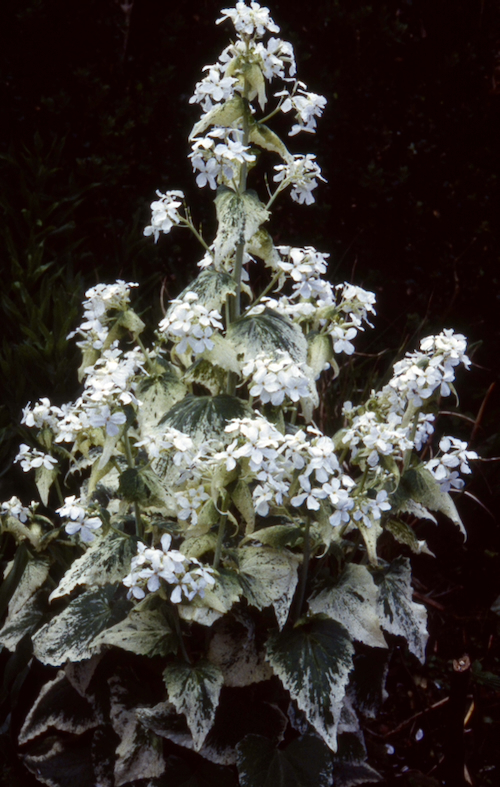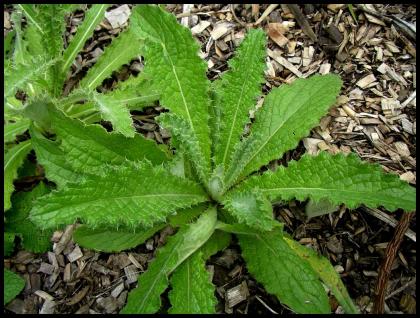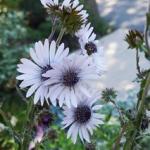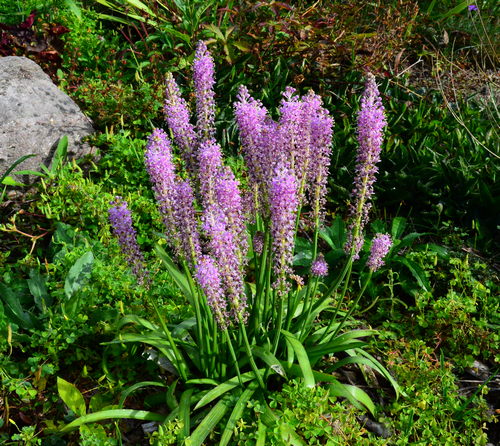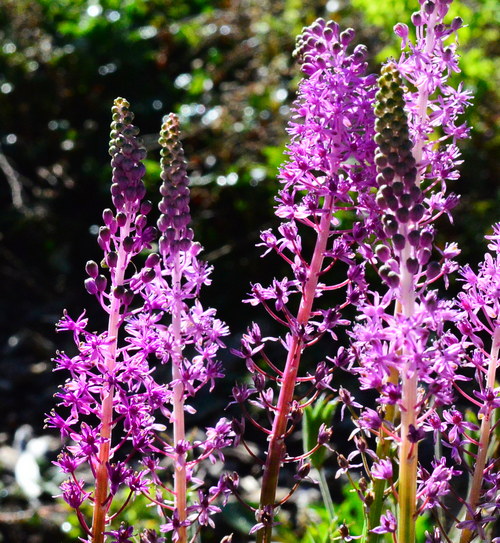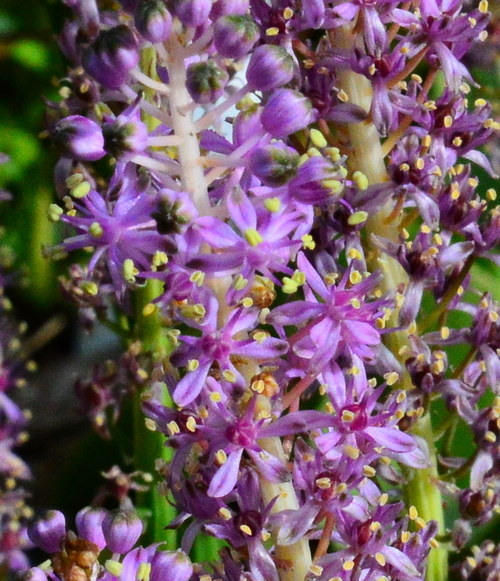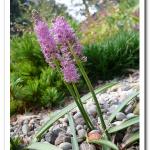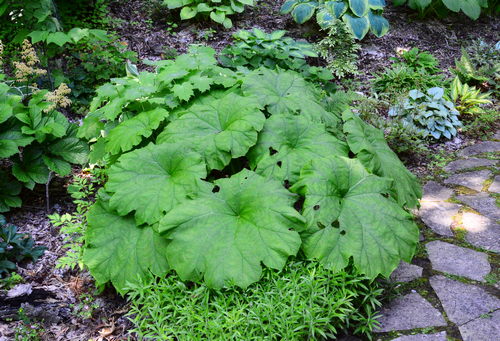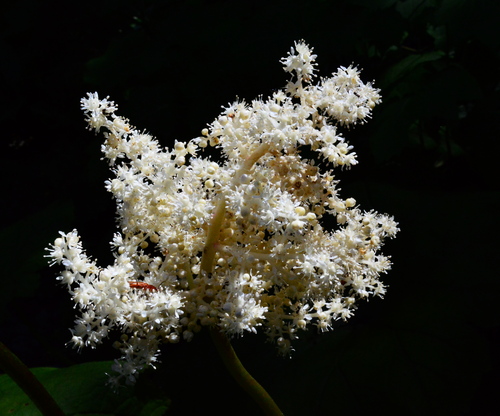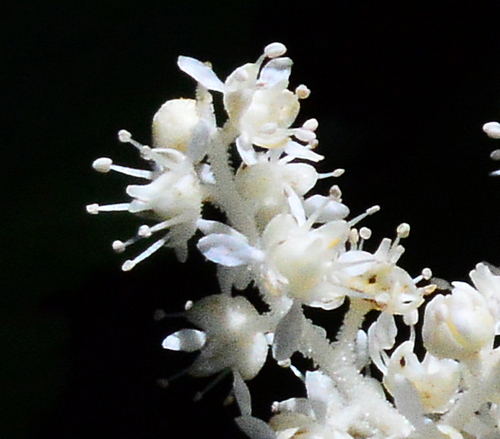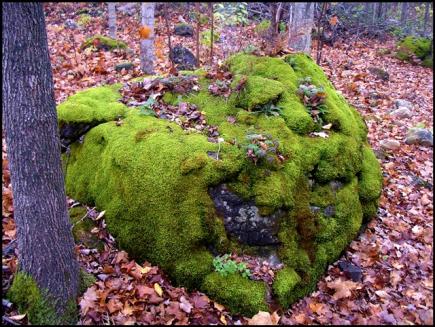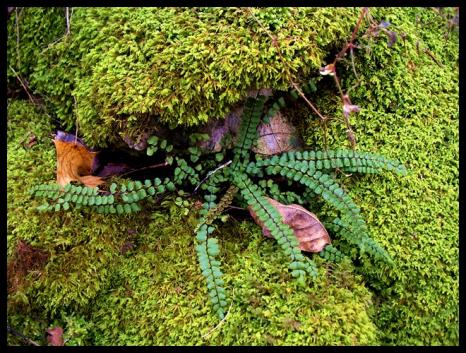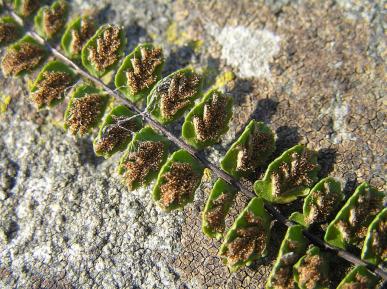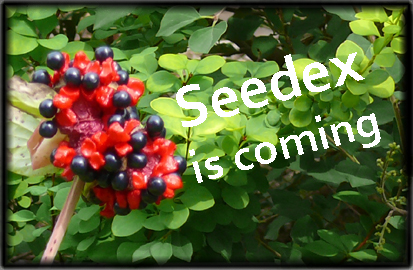(buh-kin-NICH-ee-uh ka-BUL-ee-kah)
General Information:
Bukiniczia cabulica is one of the cutest rock garden plants you can grow. Its flowers are reported to be pink, but all I see is a tan colour. This does not really matter because you don’t grow it for the flowers. This plant is all about leaves which are a mottled blue green.
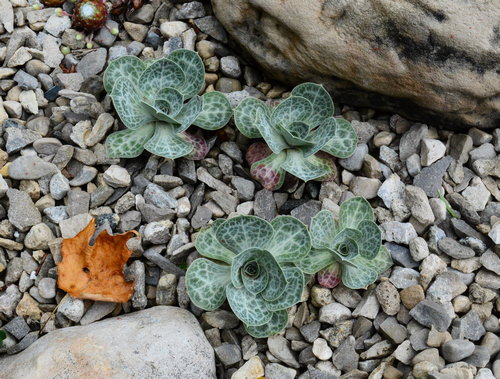
Bukiniczia cabulica, first year seedlings (1/4" rock) :photo by Robert Pavlis
It is easy to grow from seed and it self-seeds near the mother plant which is a good thing since it’s monocarpic. It will grow for 2-3 years, flower and then die.
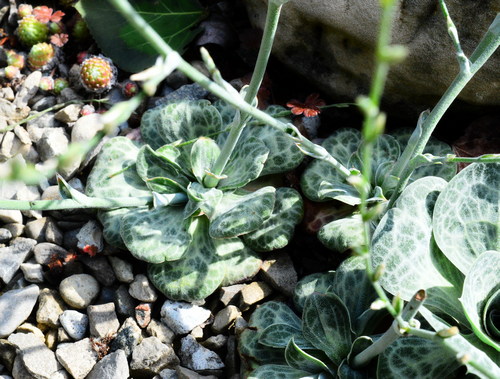
Bukiniczia cabulica, 3 year old plant flowering in summer :photo by Robert Pavlis
The pictures show my plants at varying ages, originally grown from ORG&HPS seeds. This year three of the four plants flowered and started dying immediately. The fourth got even larger, and is now making offsets. I am hoping they will survive after the mother flowers next summer. Removing flowers as soon as you see them may extend the life of the plant.
I left the flower stems on the plant until they were mature and within a month I started seeing new seedlings forming. By fall they were about a cm in diameter.
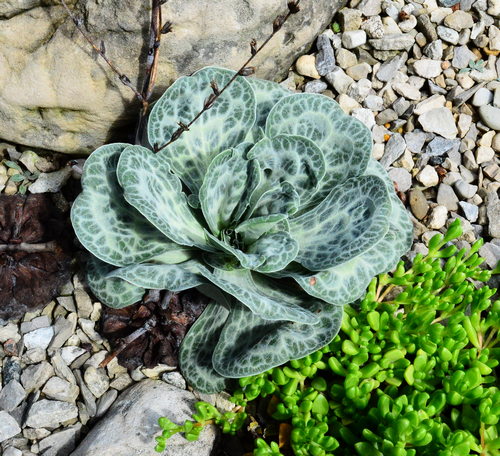
Bukiniczia cabulica, 3 year old plant forming offshoots (fall) :photo by Robert Pavlis
Life Cycle: monocarpic
Height: 4 cm (2 in)
Bloom Time: summer
Natural Range: Pakistan and Afghanistan
Habitat: ?
Synonyms: Aeoniopsis cabulica, Dictyolimon macrorrabdos
Cultivation:
Light: sun
Soil: average to sandy
Water: drought resistant
USDA Hardiness Zone: 5 - 9
Propagation: seed
Seedex availability (ORG&HPS annual Seed Exchange): occasionally

